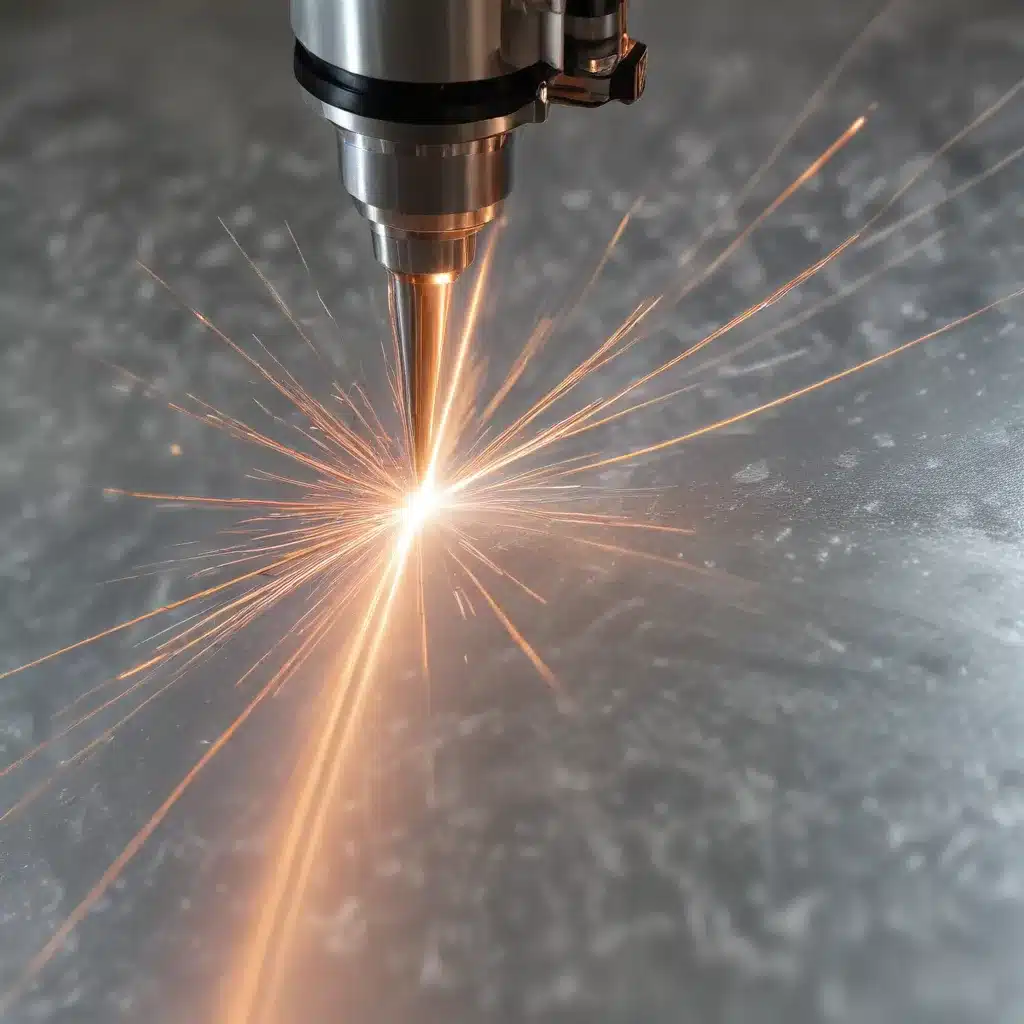
As an experienced welder and metal fabricator, I’ve seen firsthand how the advancements in laser cladding technology have transformed the way we approach surface enhancement and modification. This cutting-edge technique has opened up a world of possibilities, allowing us to create intricate, high-performance coatings that push the boundaries of what’s possible in the world of metalworking.
Mastering the Art of Laser Cladding
When it comes to laser cladding, it’s all about precision and control. The process involves melting a layer of material, typically a powder or wire, onto a substrate using a high-energy laser beam as the heat source. This allows us to apply a thin, uniform coating that not only enhances the surface properties of the base material but also seamlessly integrates with it.
One of the key advantages of laser cladding is the level of control it offers. By carefully adjusting the laser parameters, such as power, scanning speed, and powder feed rate, we can achieve the desired microstructure and properties in the clad layer. This level of precision is truly remarkable, enabling us to create coatings with exceptional hardness, wear resistance, and corrosion resistance – all without compromising the integrity of the underlying substrate.
Unlocking the Potential of Exotic Materials
As a welder and fabricator, I’ve always been drawn to the challenge of working with exotic materials. These are the materials that push the boundaries of what’s possible, offering unique properties and capabilities that simply can’t be found in more common alloys.
When it comes to laser cladding, the ability to work with exotic materials opens up a whole new world of possibilities. From titanium alloys in the aerospace industry to tungsten carbide in drilling equipment, the potential applications are truly endless. The precision of the laser cladding process allows us to overcome the inherent challenges posed by these specialized materials, such as high melting points, specific thermal conductivities, and varying thermal expansion coefficients.
One of the key benefits of using laser cladding with exotic materials is the ability to create tailored solutions for specific engineering challenges. By carefully selecting the cladding material and optimizing the process parameters, we can develop coatings that meet the exact requirements of the application – whether it’s enhanced wear resistance, improved corrosion protection, or superior high-temperature performance.
Pushing the Boundaries of Complexity
As if the advantages of laser cladding weren’t impressive enough, this technology also shines when it comes to handling complex geometries and intricate designs. The precise control of the laser beam allows us to deposit material with exceptional accuracy, even on components with intricate features or challenging shapes.
This is particularly valuable in industries that require highly customized parts or components with tight tolerances, such as aerospace, medical devices, and tooling. By utilizing laser cladding, we can fabricate parts with complex geometries that would be virtually impossible to achieve using traditional welding or coating methods.
Moreover, the layer-by-layer nature of the laser cladding process enables us to build up material in a controlled and precise manner, allowing for the creation of components with intricate features and tight dimensional tolerances. This is the essence of laser additive manufacturing, where we can essentially “3D print” metal parts by selectively adding material to a substrate.
Restoring and Extending Component Lifespans
One of the most exciting applications of laser cladding is its ability to restore and extend the lifespan of critical components. In industries like mining, oil and gas, and power generation, wear and damage to equipment can be a constant challenge, leading to increased maintenance costs and reduced operational efficiency.
With laser cladding, we can selectively apply new material to the worn or damaged areas of a component, effectively restoring its original dimensions and enhancing its surface properties. This not only extends the component’s operational life but also improves its overall performance and reliability.
For example, in the case of mining equipment, we can use laser cladding to apply a wear-resistant hardfacing to the surfaces of excavator buckets and crusher liners. This dramatically increases the resistance to the severe abrasive conditions encountered in these harsh environments, allowing the equipment to operate for longer periods without the need for costly repairs or replacements.
Similarly, in the aerospace industry, we can use laser cladding to apply high-temperature-resistant coatings to turbine blades, enhancing their efficiency and extending their service life. This type of targeted surface modification is a game-changer, as it allows us to breathe new life into critical components and keep them performing at their best.
Embracing the Future of Fabrication
As I reflect on the remarkable advancements in laser cladding technology, I can’t help but feel a sense of excitement and anticipation for the future of our industry. The ability to precisely control the deposition of materials, the flexibility to work with a wide range of exotic alloys, and the potential for creating complex, customized components – it’s all a testament to the power of innovation and the dedication of the welding and fabrication community.
At the heart of it all is a deep-rooted passion for craftsmanship and a relentless pursuit of excellence. As welders and fabricators, we take immense pride in our work, constantly seeking new ways to push the boundaries of what’s possible. And with laser cladding at our disposal, the possibilities are truly limitless.
So, whether you’re working on a critical aerospace component, a rugged mining tool, or a specialized medical device, I encourage you to embrace the power of laser cladding. Explore the boundaries of what this technology can offer, and unlock the true potential of your metalworking capabilities.
At The Weld Fab, we’re at the forefront of this revolution, providing our clients with the finest laser cladding solutions available. With our state-of-the-art equipment, rigorous quality standards, and unwavering commitment to precision, we’re redefining the way surface enhancement is done. So, if you’re ready to elevate your fabrication game and unlock the full potential of your components, I invite you to connect with us and discover the magic of laser cladding.


